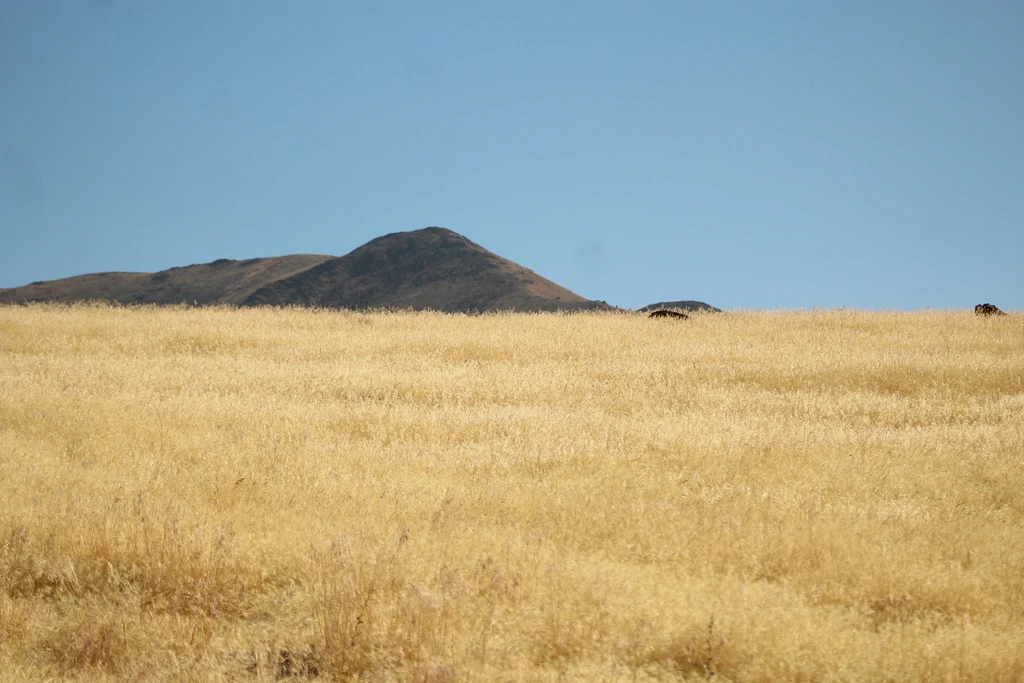The Grass-fire Cycle: How Invasive Species Are Altering Wildfire Patterns

Historically, wildfires have been a driving force in helping shape plant communities across North America, especially the native sagebrush ecosystems in the western United States and Canada. However, the conditions that have existed in the past to form these ecosystems are changing. Wildfires are intensifying across North America, but climate change isn’t the only factor at play. Invasive species are fundamentally altering fire behaviour in ways that threaten native ecosystems.
“Invasive species are altering the timing, frequency, and severity of fires across the [North America].”, says Michelle Crist, Wildland Fire Science Program Manager at the U.S. Geological Survey.
Crist spoke at the Canadian Council on Invasive Species’ Wildfires, Climate Change and Invasive Species conference held virtually on November 19th, 2024. She discussed how non-native grasses are fueling more frequent and severe fires. Her presentation revealed a dangerous cycle—one that demands urgent attention from land managers, policymakers, and conservationists.
The Grass-fire Cycle: How Invasives Amplify Wildfires
“Invasive plants increase the available fuel in native ecosystems, and they change field properties by making the ecosystems either more fire prone or less fire prone.”, explained Crist during her talk.
The cycle works like this:
- Invasive grasses spread into a native ecosystem, creating fuel continuity between native brush
- These grasses dry out earlier, before the peak fire season, creating a dense, flammable fuel load
- Eventually, wildfires ignite and are more severe and spread faster due to larger fuel loads
- After fire, invasive grasses recover more quickly, outcompeting native plants
- Over time, diverse native ecosystems are converted into a monoculture of invasive grasses.
“Native species like either sagebrush or Saguaro cacti don’t recover and eventually just disappear across the landscape. The result is high rates of conversion of native ecosystems to non-native grassland… that promote this frequent fire in sort of this positive feedback loop, which creates the invasive grass fire cycle that we see today.”, says Crist.
This positive feedback loop leads to more severe, widespread, and frequent wildfires, permanently transforming landscapes. Since 1990 invasive grasses have expanded by 800% across the western United States, driven by this grass-fire cycle, as well as a changing climate.
The Role of Climate Change
Climate change is a compounding factor, accelerating the decline of native ecosystems into fire-prone invasive ones. Warmer temperatures and shifting weather patterns, such as reduced rainfall, create drought conditions that fuel wildfires and encourage the spread of non-native grasses. Crist cited a study showing that when climate change interacts with invasive grasses, fire cycles accelerate even in areas where invasives were historically rare.
Although presented through the lens of the sagebrush ecosystem, these challenges are not unique to the Western United States.
“This is a national level issue with many invasive plants that affect fire cycles occurring in the Midwest, the Northeast, and Southeast for both non-forested and forested ecosystems.”, warns Crist.
Key invasive species fueling positive fire-cycles include cheatgrass, red brome, phragmites, guinea grass, buffelgrass and cogongrass. Many of these species can already be found in Canada.
Breaking the Cycle
Important work is underway to address this issue – in the United States the National Invasive Species Council and the Wildland Fire Leadership Council have already taken steps toward better integration of fire and invasive species management. The partnership works to better coordinate government agencies and build collaboration with non-federal partners across the wildland fire and invasive species communities. However, more funding, research, and proactive management are needed to slow the spread of fire-fueling invasive plants.
Without intervention, more landscapes will be converted into fire-prone grasslands, putting communities, biodiversity, and entire ecosystems at greater risk. Wildfires will always exist on the landscape, but with proactive management, early intervention and cross-agency cooperation, we can break the invasive species cycle that is making them worse. 🌱